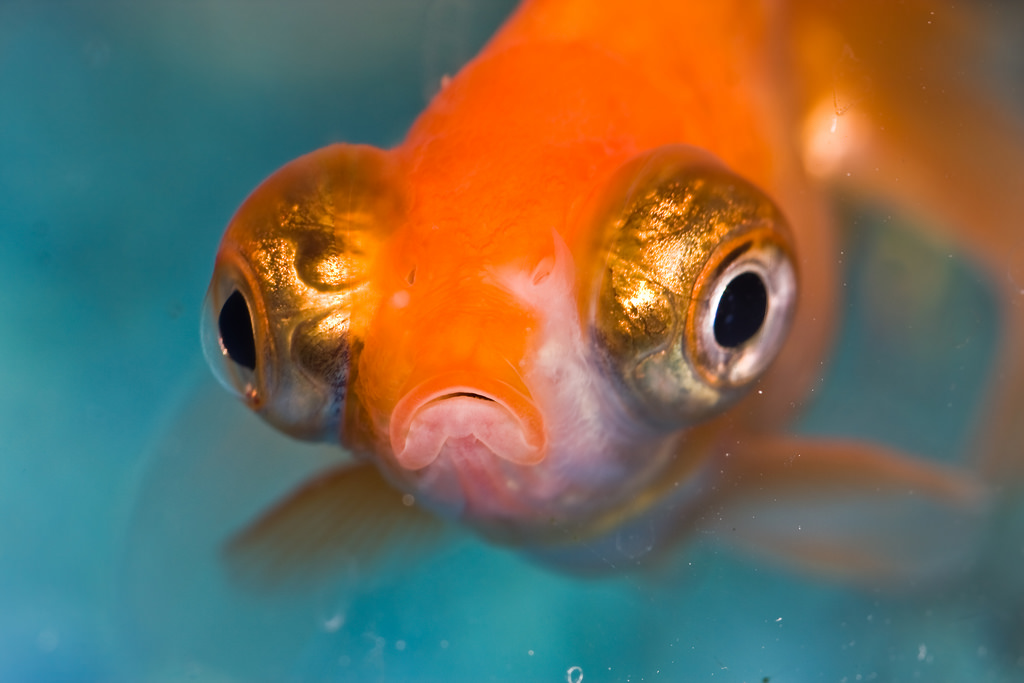Until a couple weeks ago, the only species available for observation at Propel Andrew Street High School near Pittsburgh was the typical American teenager.
But on a recent Thursday, ninth-grader Jayden Scapellato was anxious to point out some new arrivals that are upping the school’s biodiversity profile.
“We have our tank on the bottom with a few fish,” she says, explaining the ins and outs of the school’s new aquaponics system—a kind of ‘aquaculture’ that uses fish waste to grow food. “And then we have a pump that pumps water through the top, which has pods of these rock thingies that have plants inside of them.”
Those “rock thingies” contain what will eventually be spinach, which grows in a tray above the tank. The plants feed on the goldfish waste being pumped up from a pair of PetCo’s finest cruising down below.
“Ours only has two now because one of them died,” Scapellato says. “It got stuck to the pump and couldn’t get off.” (Teacher Kristen Tavenor said her students felt the fish death keenly. “They wanted a memorial service.”)
Quincy Kofi Swatson, executive director of The Door Campaign, the Pittsburgh nonprofit that created the class, admitted they’re still working out a few bugs.
“There’s going to be a lot of troubleshooting and unexpected outcomes,” he says. “But the kids are now scientists,” he says.
And nobody says scientists can’t mourn their subjects.
LISTEN: “Using Aquaponics to Train New Scientists”
Swatson says they created the pilot class to teach high school students about aquaponics. But it’s also about making science more fun.
“We use fish as a tool to engage our students in science, technology, engineering and math,” he says.
The program meets many current science education requirements, including those from Pennsylvania Common Core and Pennsylvania’s Keystone Biology Anchors. But more importantly, says Swatson, the class pummels students’ preconceptions about their own abilities.
“I want to enforce the idea that they are scientists—that they are intelligent,” he says. “And that if they want to pursue a career in science, technology, engineering and math, it’s not that far from them.”
Swatson can relate to the lack of confidence many students experience. He grew up in one of Pittsburgh’s lower-income neighborhoods and feels like he got lucky.
“I was exposed to a lot of different things through external programs from the school that helped cultivate and activate my success and my potential,” he says.
When he was in high school, Swatson was introduced to both aquaponics and conservation. He remembers learning how his actions—such as tossing a bag of chips on the ground—affected the environment. For most people, the takeaway might have just been a prescription not to litter. But for Swatson, it was something more.
“I learned that if I can affect something negatively, I can also affect it equally positively. Once I had that ownership, the sky’s the limit.”

Quincy Kofi Swatson says the school aquaponics program is aimed at shattering kids’ illusions that being a scientist is beyond their reach. Photo: Margaret J. Krauss
That’s what Swatson hopes kids learn from managing the aquaponics system: They’re in control—not just of the fish and the plants—but of the impact they can have with their lives.
Standing in small groups around their lab tables, the students discuss the differences between biomes and ecosystems with an intensity that could easily be mistaken for chaos.
“These kids are thinking deeply,” says their teacher, Kristen Tavenor. “They’re questioning and they’re caring for an environment—making sure it’s pH-balanced. So they’re engaging in a lot of scientific concepts.”
Melvin Johnson sat up front, closest to the tanks.
“I like doing experiments—seeing things react to other things,” he says. “When I look at water, it reminds me of space.”
Johnson loves space. And to him, the system is like its own universe. For China Hickman-Hill, aquaponics makes her think about how things work.
“People usually think life is just something that happened—that everything happens just because,” she says. “But it’s cool to know the background to it and see how things happen and why it happens. So it kind of helps you with life more. I feel like I can make a cause and a change just because I know what’s happening in it.”
That’s exactly what Quincy Kofi Swatson likes to hear from students. The aquaponics project is in the first of a three-year pilot program, and Swatson says he hopes to bring it to more classrooms soon. He says like the aquaponics systems themselves, the curriculum can only prove itself over time.
“We want to plant seeds now. We can’t harvest the next day. We have to wait. We have to invest.”



